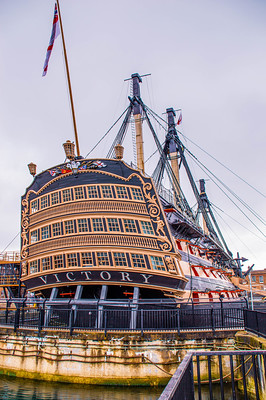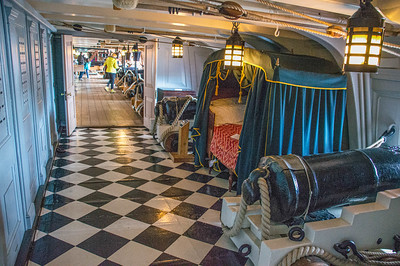About HMS Victory
HMS Victory is Britain’s most celebrated naval warship, an enduring memorial to Vice-Admiral Lord Nelson, and an icon of the Royal Navy.
To honour and celebrate her formidable history she has been restored in breath-taking detail to her Georgian colours, so much so you’ll almost believe that she could set sail today. Walk the same decks trodden by one of history’s most famous naval commanders, Horatio Nelson up until his untimely death at the Battle of Trafalgar, his last great victory.
But HMS Victory is more than just one story, with over 800 crew members living and serving together. Experience how they lived below decks, living and fighting during the height of Georgian navy.
www.historicdockyard.co.ukVictory was launched on 7 May 1765, but was only commissioned for active service in March 1778 to take part in the War of American Independence (1775–83). The ship had 104 guns, 27 miles of rigging and four acres of sail. Quickly proving successful, Victory could sail faster than many of its smaller consorts, thanks to the excellent design of the underwater hull.
Royal Museums Greenwich























